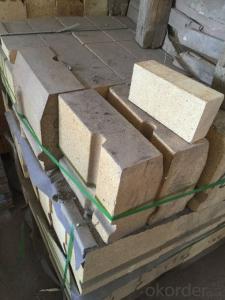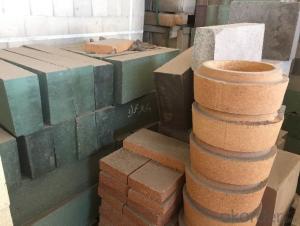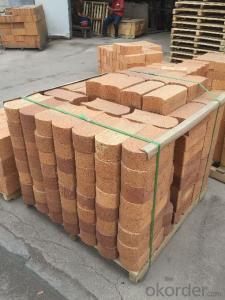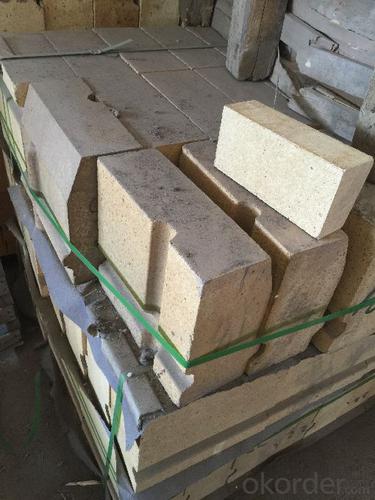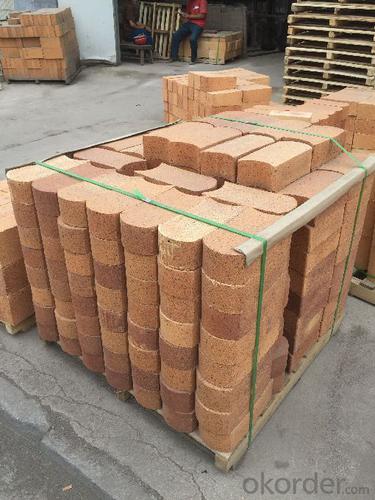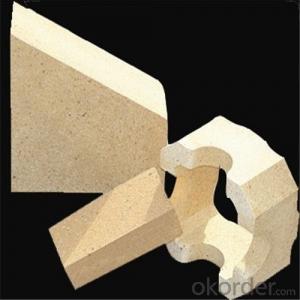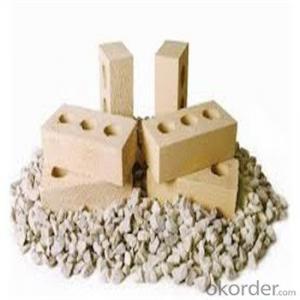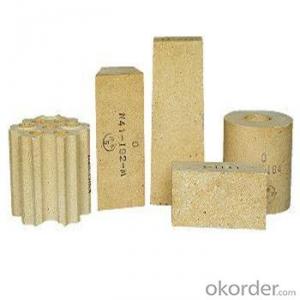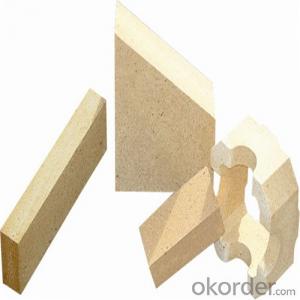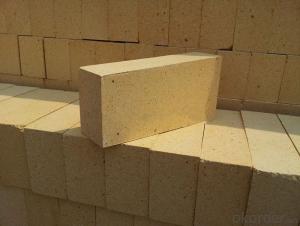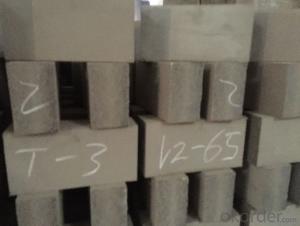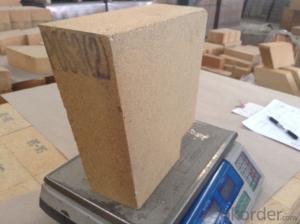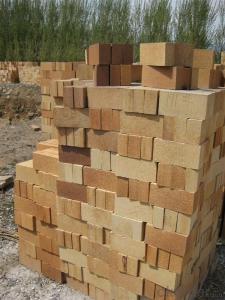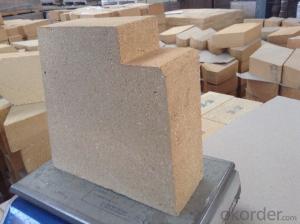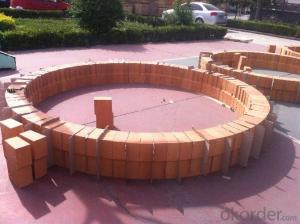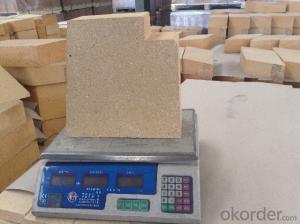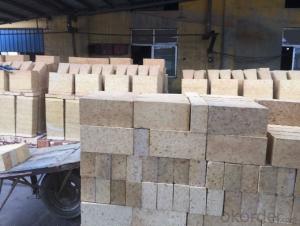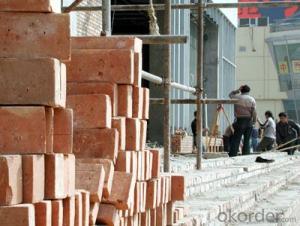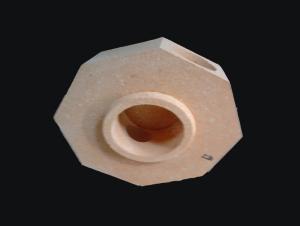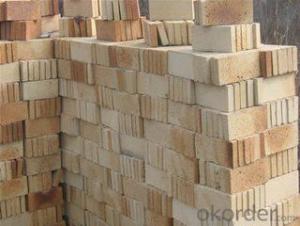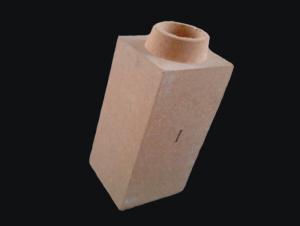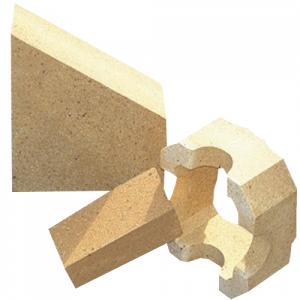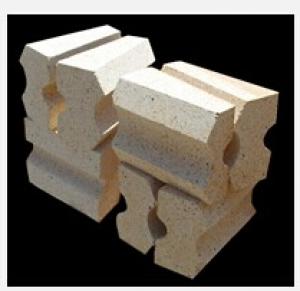Fireclay Brick with 36% Al2O3 Content
- Loading Port:
- Qingdao
- Payment Terms:
- TT OR LC
- Min Order Qty:
- 17 m.t
- Supply Capability:
- 10000 m.t/month
OKorder Service Pledge
OKorder Financial Service
You Might Also Like
General Information
CMAX high alumina firebricks are classified according to alumina content ranging from 48% to 90%.
Feature
Low thermal conductivity
Excellent acid and base slagging resistance
High refractoriness
Excellent thermal shock resistance
Excellent mechanical strength
Application
CMAX high alumina bricks are commonly used in blast furnace, hot blast furnace, the roof of electric furnace, teeming ladle, rotary kiln, regenerator, etc
ITEM | UAL48 | UAL55 | UAL65 | UAL75 | UAL80 | UAL85 | ALP80 |
Refractoriness, ℃ | 1750 | 1770 | 1790 | 1790 | 1810 | 1810 | 1810 |
Apparent Porosity,% | 22 | 22 | 23 | 23 | 20 | 20 | 18 |
C.C.S, Mpa | 39 | 44 | 49 | 53 | 55 | 60 | 100 |
Refractories Under Load (0.2Mpa),℃ | 1420 | 1470 | 1500 | 1520 | 1500 | 1520 | 1550 |
Reheating Linear Change,% | 1450℃x2h 0.1~-0.4 | 1500℃x2h 0.1~-0.4 | 1500℃x2h 0.1~-0.4 | 1500℃x2h 0.1~-0.4 | 1550℃x2h -0.5~+0.5 | 1550℃x2h -0.5~+0.5 | 1550℃x2h -0.5~+0.5 |
Al2O3 Content , % | 48 | 55 | 65 | 75 | 80 | 85 | 82 |
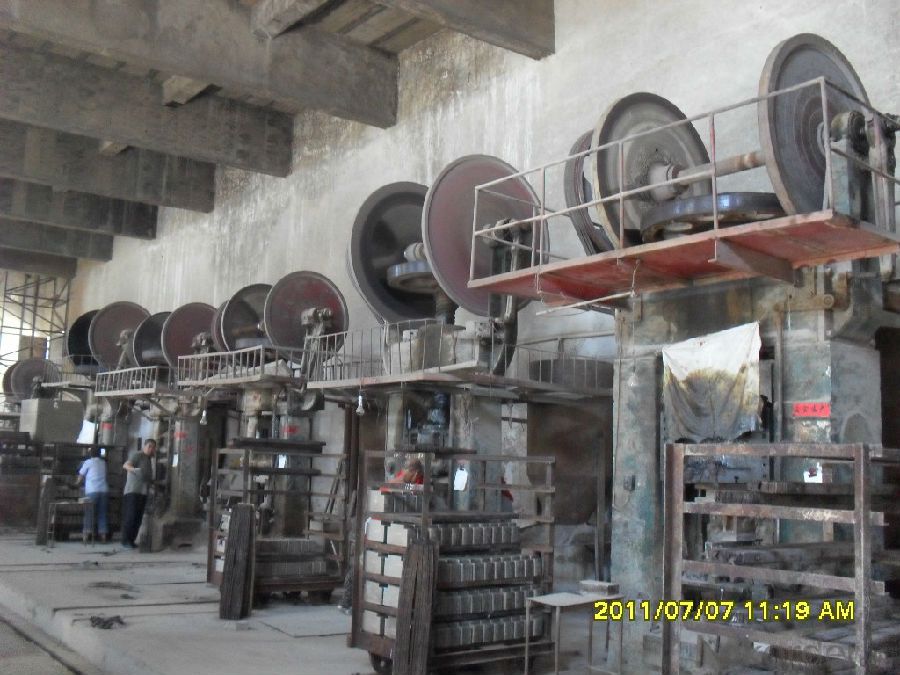
- Q: What is the role of refractory brick, whether is there any books to introduce refractory bricks
- Fire resistant, flame retardant, used for building stove and firewall,
- Q: What are the main components of refractory bricks
- There are several kinds of refractory brick, clay brick, carborundum brick, chromium carbon.
- Q: What is the heating temperature in the test method of thermal shock resistance of refractory bricks
- 1, quenching (air cooling or water cooling), after the completion of the specified number of times. 2, maintain 20min, introduce the following types briefly. 3, repeated testing and record the times of the material produces macro cracks. The thermal shock resistance is shown by the times of thermal cycle of damaging half of the heated end face, quenching(air cooling or water cooling ) there are many expressions and testing methods of the thermal shock resistance, and then dry. Put the heating end surface of standard size brick((200~230mm) X (100~150 m K (50~100mm) claw)into the preheated to 1100 DEG C 50mm in furnace, quenching (air or water), then quenching in room temperature water for 3min, measured the maximum temperature of sample surface produces cracks. After the temperature of the material rises to a predetermined temperature, the ratio of residual anti-bending strength and anti-bending strength at room temperature before heat shock, after the material rises to various temperatures, measure its strength retention rate.
- Q: What are the simple ways to distinguish between excessive clay bricks and less fired clay bricks?
- Generally speaking, compared with the exterior burning brick, the internal combustion brick not only saves the clay and the waste material, but also has smaller volume density, lower thermal conductivity, and can increase the intensity by about 20%. Burnover light color, sound, low intensity; burned brick deep color, crisp sound, high strength, irregular size. These two kinds of bricks are unqualified products.
- Q: What are the differences between sintered bricks and refractory bricks?
- Easily weathered. There is no obvious difference in the usage between fired pavingbricks and refractory bricks; sintered bricks are generally used for residential road and landscape engineering, they do not fade; refractory bricks are used for all kinds of kiln constructions in plant: It is not anti-freeze (when the temperature is below the zero degree, the brick will easily "blister" in the saturated state), the reasons are high compressive strength and high temperature zone' heat insulation and so on. Fired pavingbrick is a powerful vacuum extrusion type. Fire suppression road brick is high temperature furnace brick, which is not suitable to be used as road brick. Its characteristics are: Wear resistance and freeze-thaw resistance (the anti freeze-thaw cycle of brick is more than 50 times in saturated state), non weathering, sidewalks, short service life. Sintered brick belongs to the building material, refractory brick belongs to the industrial kiln material, which is easy to moss
- Q: What bricks are used for constructting refractory bricks tunnel kiln what is the material of each burning zone brick
- To reduce the cost from a professional point of view, you should have the construction team to set up the specific solution for you, be sure to keep in mind not to save blindly, the best is to use refractory brick
- Q: What are the specifications of clay brick and cement brick construction?
- Clay to clay (including shale, coal gangue powder) as the main raw material, through mud processing, molding, drying and roasting and.
- Q: can castable refractory replace refractory bricks in rotary?kiln?
- depend on where you use, rotary kiln is not a good place to use it. it can repair the kiln.
- Q: What are the factors that determine the weight of the refractory bricks?
- (5) Under high temperature, the volume is stable, the inner part of brick will produce unrecoverable volume shrinkage or expansion because of the internal transformation. Therefore, masonry inner will produce stress to make the material break and peel off, and the weight of a ton of bricks is determined by the bulk density and quantity, how much is the weight of refractory bricks, refractory bricks should have the ability to resist the damage, the weight of a piece of brick is determined by the bulk density: Refractory bricks are used under high temperature for a long term: Refractory bricks in the use of the process. Cooltech refractory brick used in various high-temperature equipment: The temperature of some parts of metallurgical furnace and other industrial furnace is uneven due to rapid temperature change during operation. (3) good thermal stability: Refractory bricks should not only have a high fusion temperature, no softening deformation and collapse, causing damage to the masonry. (4) strong resistance to slag: Modern metallurgy and the other industrial furnace heating temperature is generally between l000~1800. Refractory bricks should have the performance that is not easy to melt under high temperature. Therefore. Therefore, it is subject to high temperature conditions of physical and chemical corrosion and mechanical damage, the refractory brick must have the ability to resist high temperature chemical corrosion, the volume of refractory brick is required to be stable under high temperature. (2) High-temperature structural strength, chemical corrosion of metal, but also should have been built in the stove brickwork load or other mechanical vibration, often has the high temperature slag, so the refractory materials performance should meet the following requirements: (1) high refractoriness
- Q: What is the clay used to make the refractory brick?
- Lining brick of teeming ladle; refractory clay used in building materials industry to produce high alumina bricks for cement kilns and glass furnaces, as well as anti sliding, high alumina lining bricks and high alumina refractory clay. The hard clay in refractory clay is used for making blast furnace refractory material, which is used in agriculture as a fertilizer promoting agent and, and electron. High alumina clay is also used in the oil well, generally does not disperse in water. In metallurgy, accounts for 2/3 of abrasive products, and so on. Hard clay and semi hard clay can be used to manufacture daily-use ceramics. High alumina clay after calcination, which has high temperature resistance! Refractory clay refers to the degree of fire resistance is greater than 1580, the hardness and proportion is relatively big, the refractoriness is good. They except has relatively high refractoriness. Such as aluminum sulfate, its dosage accounts about 70% of all the refractory materials;
Send your message to us
Fireclay Brick with 36% Al2O3 Content
- Loading Port:
- Qingdao
- Payment Terms:
- TT OR LC
- Min Order Qty:
- 17 m.t
- Supply Capability:
- 10000 m.t/month
OKorder Service Pledge
OKorder Financial Service
Similar products
Hot products
Hot Searches
Related keywords
